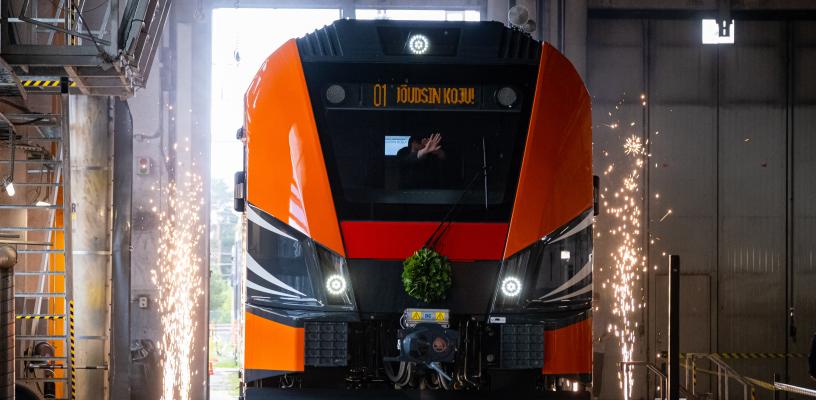Estonia is preparing to increase the top speed on the railways. The owners of the Estonian railways infrastructure, AS Eesti Raudtee and AS Edelaraudtee, are preparing to increase the top speed on the railways to 160 km/h, so that passenger trains can start offering faster connections between regions.

Elron’s new trains can enter the line from September 2025 according to the specified schedule.
“Estonia is making a big turn in train traffic, with which we want to increase the number of domestic train passengers at the expense of individual car users from the current 8 million to 20 million passengers in 2035. This will help reduce the carbon emissions of the transport sector and thus contribute to the achievement of Estonia’s climate goals,” said Lauri Betlem, chairman of the board of Elron. “In order for this to be possible, investments have been made in infrastructure for some time and we have ordered 16 new passenger trains. According to the specified schedule, we can send them to serve the Tallinn – Tartu line from September 2025 after the completion of the infrastructure.”
Estonian railways that are being prepared for a top speed of 160 km/h
Between 2024 – 2026, the railways will be straightened and reconstructed in the Tallinn – Viljandi, Tallinn – Tartu and Tallinn – Narva directions.
The owner of the western (Tallinn – Paldiski/Turba/Kloogaranna), eastern (Tallinn – Narva) and southern (Tallinn – Tartu/Koidula/Valga) infrastructure, AS Eesti Raudtee, has several large projects underway at the same time, the aim of which is to increase the speed of trains up to 160 km/h. To this end, railways are electrified, straightened and renewed, railway platforms are rebuilt, traffic control systems are modernized and safety equipment is added to crossings in the form of barriers and traffic lights.
“In order to be able to travel from Tallinn to Tartu and Narva at up to 160 km/h on an electrified railway, Eesti Raudtee has already invested and is investing a total of EUR 500 million from the European Union, the Estonian state, and Estonian Railways,” stated Kaido Zimmermann, chairman of the board of AS Eesti Raudtee.
In February 2025, the electrified railway from Tapa to Jõgevan will be completed, where testing of new dual-system (3 kV/25 kV) Škoda trains can begin in the area of the 25 kV contact network. “The electrified railway to Tartu will be completed in August 2025 at the latest, and in 2025 we will also start infrastructure works on the railway between Tapa and Narva,” added Zimmermann. “They will certainly cause some inconvenience to passengers, but in a few years these investments will help to improve the travel experience, reduce journey times and make timetables better.”
For AS Edelaraudtee, the owner of the South-West (Tallinn – Rapla/Türi/Viljandi) infrastructure, the most important infrastructure work this year and next year is the reconstruction of the Rapla – Lelle railway section, during which eight crossings will be equipped with signaling and barriers, the station road and railway platforms will be rebuilt, the railway will be straightened and the route will be set to the top speed of trains can reach 160 km/h.
“We have made all the necessary preparations to increase the capacity of the Tallinn – Rapla section and also to implement the timetable,” stated Rain Kaarjas , a member of the management board of AS Edelaraudtee . “In total, we will invest more than 30 million euros in the reconstruction of the Rapla – Lelle section.”
Elron will invest EUR 147 million
Passenger train operator Elron (AS Eesti Liinirongid) will invest a total of 146.8 million euros in the expansion of the train fleet between 2024 and 2026, for which the Škoda Group will deliver 11 electric long-distance trains and 5 electric suburban trains. “The passenger is primarily interested in a quick and comfortable arrival and a good timetable.
With the support of new trains and modernized infrastructure, we can start to offer it and, for example, we have set the goal of reaching a journey time of the Tallinn (Ülemiste) – Tartu express line of 1 hour and 30 minutes,” said Lauri Betlem, chairman of Elron’s board .
“When the electrification of the Tallinn-Tartu line is completed and new trains are brought onto the line, we can start to improve the timetables of other directions as well – for example, add additional departures between Tallinn-Narva and Tallinn-Viljandi,” Betlem added.
The purchase of new trains for Elron is financed by CO2 funds and the modernization fund of the European Union.
Share on:



